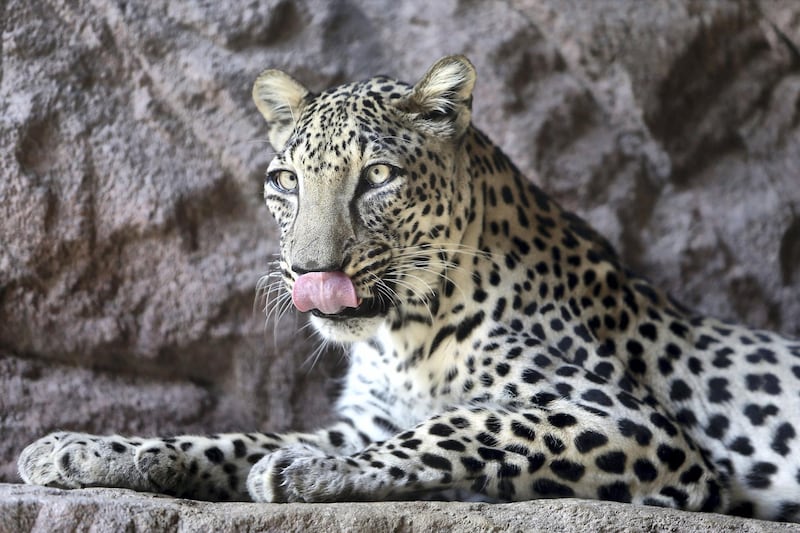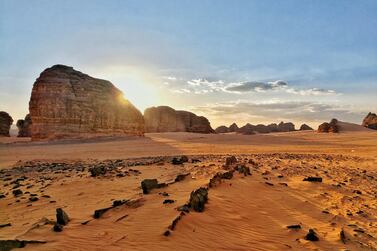How much is an Arabian leopard's life worth? According to the Royal Commission for Al Ula, at least $20 million (Dh73.4m).
The Saudi Arabian tourism project has signed a deal for that amount with a conservation organisation, with the aim of helping protect the under-threat species.
The leopard is indigenous to the region, with a population that once flourished on mountains across the Arabian Peninsula. Since 1996, however, the creature has been placed on the International Union for Conservation of Nature’s Red List as a critically endangered species.
The new deal, signed by the Royal Commission for Al Ula (RCU) and non-profit Panthera, will champion regional and international conservation initiatives, with a focus on preserving the Arabian leopard.
Our partnership with @PantheraCats comes as part of the @RCU_SA’s efforts in preventing the extinction of the Arabian Leopard, and protecting the Kingdom's history and heritage. pic.twitter.com/5c5zb1EsB8
— بدر بن عبدالله بن فرحان آل سعود (@BadrFAlSaud) June 7, 2019
"The signing of the agreement is a major milestone in our shared ambitions to reintroduce the Arabian leopard population in the region and join global partners to support the preservation of these wild cat populations worldwide," said Prince Bader bin Abdullah bin Mohammad bin Farhan Al Saud, Saudi's Minister of Culture and Governor of RCU.
"It is our duty to protect, conserve and build the population numbers to preserve the species from becoming a footnote of history."
The signing ceremony was held at Al Ula's Ashar between Prince Bader and Panthera chairman Thomas Kaplan, who added that the initiative was a "truly exceptional act of environmental statesmanship".
"The Arabian Leopard Initiatives ... are a testament to the power of individuals to alter the trajectory of a species – away from extinction and towards rebirth," he said.
Under the partnership, the RCU joins The Global Alliance for Wild Cats with a commitment to investing $20m over the next 10 years. The money will help fund initiatives such as breeding programmes, community-based conservation projects and scientific research designed to support a future for the endangered species.
Al Ula, which was revealed as the location of a new ecotourism project in the kingdom in February, hopes to attract as many as two million visitors to the area when the development is complete.
Conservation of the Arabian leopard is not the only focus of the project, as the chief executive of RCU told The National last month.
“Al Ula is a place of spectacular natural beauty, with varied habitats that once thrived with life, coexisting with our early ancestors, as seen through rock inscriptions in the valleys,” Amr Al Madani said. “We are committed to reliving these traditions of peaceful coexistence and preserving the natural beauty of Al Ula’s landscapes, as well as re-establishing the rich diversity of plant life and wildlife that once flourished here.”
The project has already helped introduce Nubian ibex, red-necked ostriches and idmi gazelles back to the area, as well as resulted in the replanting of indigenous, biodiverse acacia woodland.







